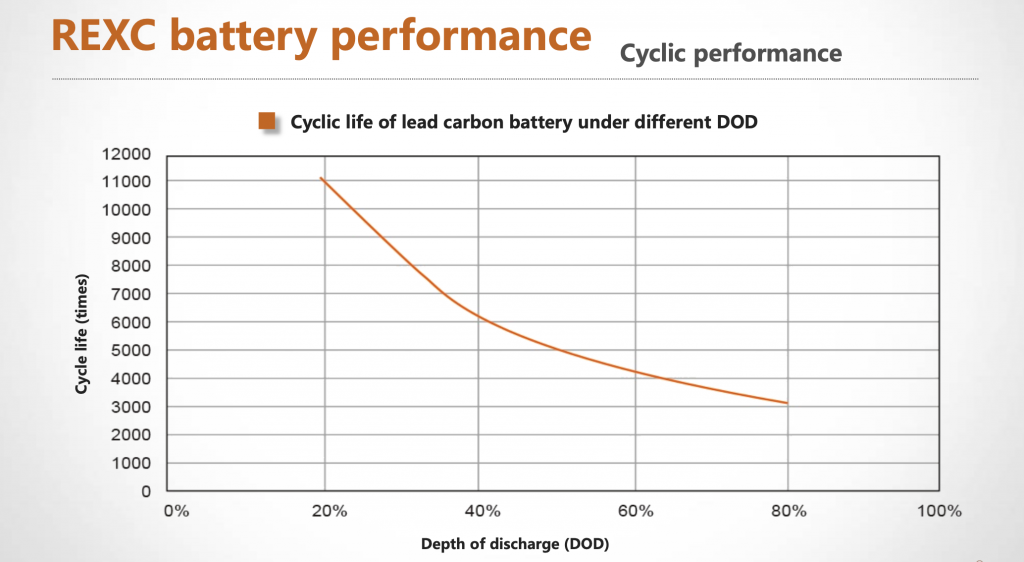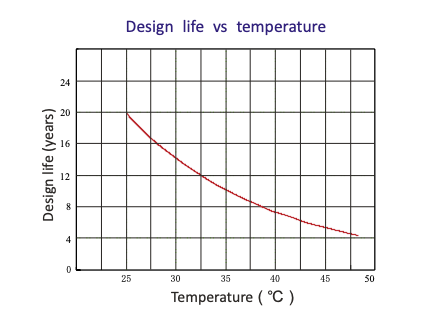There are a few key factors that will determine how long your battery bank will last. These are
- how deeply you regularly discharge the batteries (“depth of discharge” or DoD)
- whether you have a stable temperature environment
- if you can get them fully recharged regularly
If you discharge the batteries on average to 50% DoD once a day, have them inside in a stable temperature that ranges from 15 to 25 °C, and have enough solar panels to recharge them completely when you get a full sunny day, then you can expect 10 to 12 years life, with 1 cycle per day. If you discharge less than this you can get a lifetime of 15 years or more. The chart of cycle life vs depth of discharge shown on the right gives you an idea of how many times you can cycle the batteries for a given DoD. Lead carbon batteries have cycle counts for a given DoD that are 3 or 5 times that of typical flooded lead-acid batters or GEL/AGM batteries. Note that Narada REXC series batteries are tested to the IEC 61427 standard which is explained in one of our FAQs.
High temperatures are a problem for all battery types. The internal chemical reaction inside the battery roughly doubles for each 10 °C increase in temperature, and this affects lifespan. Ambient temperatures over 30 °C will cause corrosion of the positive battery plate internally and can lead to battery failure within a few years. A battery operated at 40 °C will have less than half the life of one kept at 25 °C. If your battery bank is kept in an outside shed ensure the building is not subject to direct hot summer sun that could heat it up internally.
Although lead-carbon batteries can handle being used in a partial state of charge for extended periods, they do need to be fully charged from time to time to keep their full operating capacity. Over winter it is very easy to end up with your battery bank in a permanent state of 50% discharge or worse. You need to fully charge the batteries at least once per month. This can be achieved with a generator, or more economically these days by having more solar panels than you think you might need, so that in winter you can generate enough current to fully charge batteries on a sunny day. You may end up with excess solar capacity in summer, but most modern controllers can simply ignore this excess capacity without causing harm – but do check your own controllers specifications.


